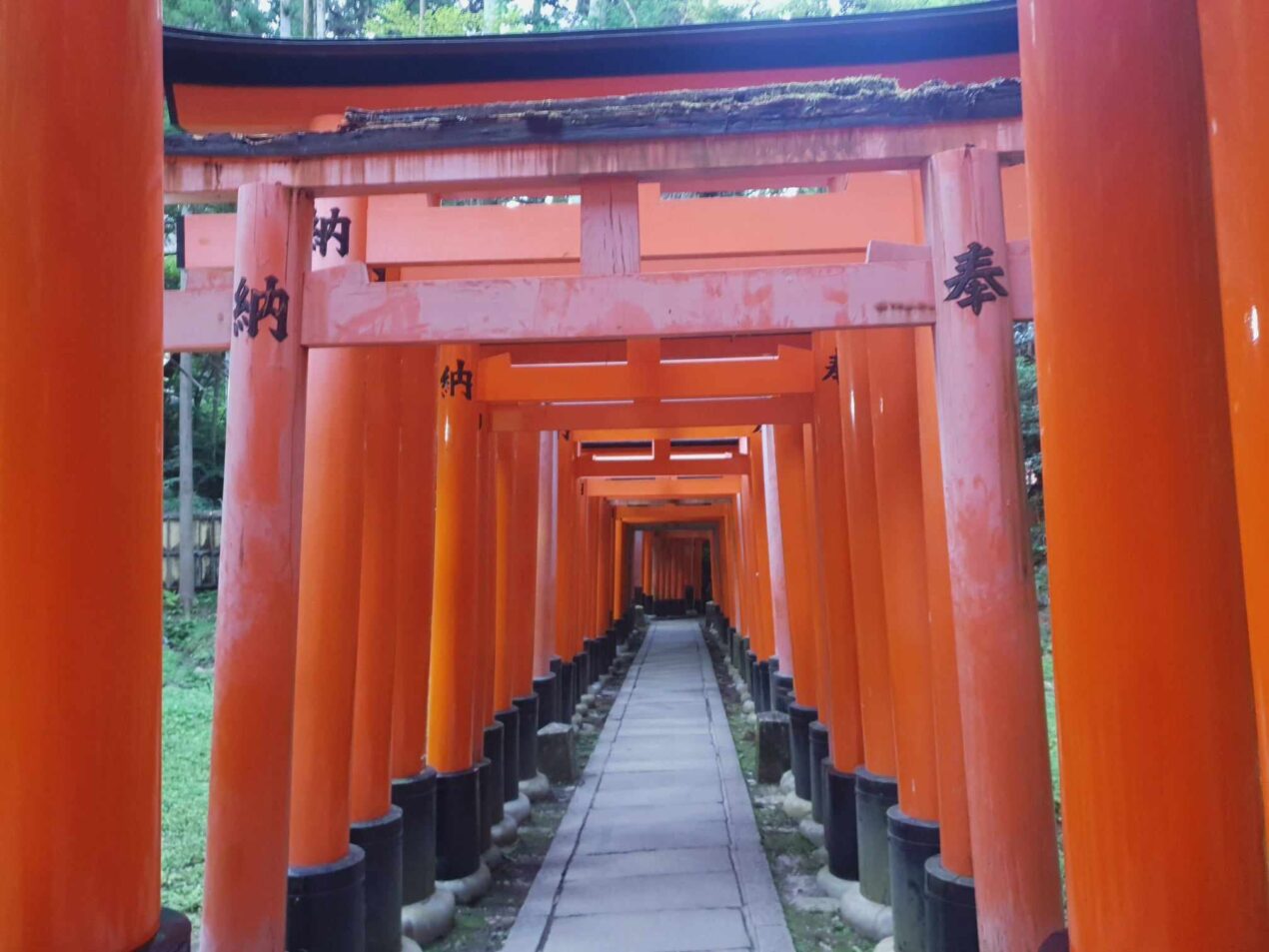Is Visiting Fushimi Inari Taisha in Kyoto Worth It?
If you’re planning a trip to Kyoto (or the Kansai Region of Japan), then there’s about a 110% chance you’ve come across the traffic-cone colored, bright orange gates of the popular shrine ‘Fushimi Inari Taisha’. It’s a favorite amongst Instagram, TikTok, and other social media influencers, who especially love showing highly curated (and filtered) shots of them standing in front of a stretch of gates with no one in sight, leading you to believe that you’ll have the place all to yourself.
This is one of the biggest misconceptions that I think throws a lot of people off and leads to disappointment, with a non-zero sum walking away feeling as if Fushimi Inari wasn’t this magical gated portal to the otherworld and back. But is Fushimi Inari actually worth it and should you even bother making a trip if you’re traveling to or through Kyoto?
Yes? No? All the above (sung like Maino in the song ‘All the Above’ with T-Pain)? Here are my thoughts.
Below, I’ll walk through in further detail if (in my humble opinion) the Fushimi Inari Taisha shrine and torii gates are worth checking out or if they’re just another overrated landmark and tourist trap that should be avoided in favor of more productive or meaningful experiences elsewhere. But first, let’s figure out how you can actually get there (once you’ve made your way and arrived in Kyoto).
Getting to Fushimi Inari
Lucky for you (and me), Japanese transportation is painless. Kyoto, like most Japanese cities, boasts a comprehensive, efficient, and clean metro (the Karasuma line and Tozai line) that is intersected by countless private rail lines. It’s the complete opposite of the 1 Train in New York, hectic with a non-zero chance that you’ll see someone pooping or slugging a paper bag of malt liquor and smashing the empty glass bottle on the subway floor.
Depending on where you are in the city, you’re looking to end up at one of two stations: (1) Inari Station and (2) Fushimi-Inari Station – both are no more than a several-minute walk from the base and main shrine. I’m not a train conductor or cartographer so I strongly recommend using Google Maps to iron out the route from wherever you are coming.
However, if you are at Kyoto Station, simply hop on the Nara Line and ride it two stops to Inari Station. If, like me, you are coming from the main shopping district along Kawaramachi-dori (shopping street), then head over to Gion-Shijo Station and ride the Keihan Main Line three stops to get to Fushimi-Inari Station.
If you want the exact address of Fushimi Inari Taisha – here it is (however, this is 100% the top of the mountain, so just head to either one of those stations and then use common sense to navigate to the base):
The main shrine and beginning of the Tang-colored gates that are the star of the show can be found in the center back after entering the area. From there, you’ll see a thicket of bright orange gates leading up a hill (mountain) that is hard to miss.
As someone who first arrived when the sun was setting, I was worried that my general lack of common sense would lead me astray. I was nearly 200% (nearly) convinced that I’d end up just wandering around the forest of Kyoto for several hours before squaring off with an Asiatic black bear in a gladiatorial death match. So if I can find the entrance and start of the gates (center back), you can.
I did, however, become lost at one point. I’ll get more into this below.
What Exactly is Fushimi Inari Taisha?
You may have first come across it in the flashback scene in the iconic period drama Memoirs of a Geisha (or from TravelBunny4Lyfe4237’s TikTok page – completely made that one up by the way), Fushimi Inari Taisha (伏見稲荷大社), commonly referred to as just ‘Fushimi Inari’ is a popular shrine in Kyoto, Japan, that is dedicated to Inari, the Shinto god of grain (ex. Sake, rice, and commerce), distinguished by its 10,000-plus bright orange torii gates leading up a mountain. The actual shrine sits at the bottom of a mountain with the same name, ‘Inari’, with the peak of the mountain clocking in at just over 750 feet (230 meters) above sea level.
All 10,000 torii gates have been donated by various Japanese businesses, with the smallest ‘donation’ starting at 400,000 yen and the highest running into the millions (typically for the larger gates). Fushimi Inari became popular in the first half of the Heian period (793 to 1185) – a time hailed as the apex of Japanese imperial rule and considerable peace – when the then Emperor Murakami (no, not the surrealist Japanese writer – however, he was born in Kyoto) ordered messengers to deliver written accounts of momentous occasions and events to guardian deities (kami) across Japan (including Inari).
The earliest structures of the shrine took shape in the early 700s in Kyoto. However, the main shrine didn’t come into existence until 1499, with thousands of torii gates being donated starting in the Edo period (1603 to 1868). Torii gates are said to be the separation between the physical and spiritual world, with their distinctive bright orange color said to be a protective force against evil spirits and forces.
Why Are There Fox Statues Everywhere at Fushimi Inari?

After showing up to Fushimi Inari it will become quickly apparent that there is some symbolism or driving reason behind all the fox statues scattered around the shrine and up the mountain. I naively thought it must be because Kyoto is famous for foxes and I’d likely see some on my hike up the mountain. Wrong.
Foxes, referred to as ‘kitsune’ in Japanese, are hailed as the messengers of the shrine, there to protect both the patrons and worshippers and those on the other side (in the spirit world) and deliver communications between the kami (deities) and the living. The red bibs draped around their necks as a symbol of good luck and fortune. Japanese folklore regards foxes (like most cultures) as possessing high intelligence, skill, and durability – all qualities of an effective and timely messenger.
Keep an eye out for them when hiking up and let me know how many you count.
How Much Does Fushimi Inari Cost?
Zip. Nada. Zilch. Fushimi Inari is free. It’s open 24/7 and won’t cost you a penny.
The metro ticket on a local Kyoto line won’t run you more than several hundred yen (USD 2 to 3) and walking is, of course, free. There are a handful of snack and souvenir stalls and restaurants at the bottom. The only one I actually ate at was a small beef skewer stall which you can’t miss when first pulling up to the shrine. I’d eat about six of these to nourish my ailing, 220-pound frame before making the trek up and then be disappointed when I came down that I didn’t eat more.
The fact that it is open 24/7 brings me to an important point which I’ll expand on below – avoid going during peak hours.
Pale Ale Travel Tip: You can’t pass through Kyoto and not get some smoky, high-end yakiniku in your system (especially if it’s of the Wagyu variety). Make sure to read my guide to yakiniku restaurants in the Kansai Region, which includes two high-end Wagyu restaurants in Kyoto.
Is Fushimi Inari Worth It?
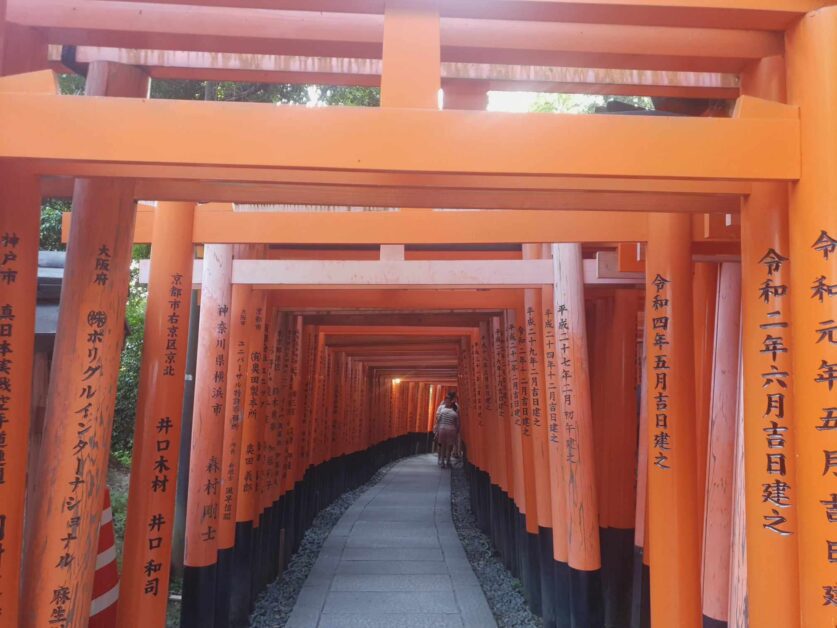
According to an incredibly arbitrary top-ten list by a random luggage company ‘Stasher’, Fushimi Inari was rated as one of the world’s ten worst attractions. I don’t even want to link to the study because I find it so ludicrous and unfathomably preposterous that one of the metrics for determining the rating was TikTok engagement. The venerated ‘Victoria Harbour’, in my home of Hong Kong, was also on that same world’s ten worst list – and it’s one of my absolute favorite things to see…ever (especially taking the Star Ferry from Kowloon to Hong Kong Island). Take this as a personal message Stasher and Co., you are some grade-A bozos.
Sorry. Things got a little heated there. Deep breaths, Big Body. Deep breaths. Okay, now back to the show.
Tourist Trappin’ Like a Narco
First, I want to explain that Fushimi Inari is not, in fact, a tourist trap as this would be a misnomer and incorrect to label it as such. A tourist trap technically refers to an attraction or area that pushes goods or services at a marked-up price, significantly more expensive than you would pay elsewhere at a similar attraction or in the vicinity.
As mentioned above, Fushimi Inari costs exactly 0 yen – this translates to $0 in U.S. doll-hairs for all those forex nerds out there.
But is Fushimi Inari Taisha overrated? What leads to the contention around it?
Fushimi Inari in Two Words: Not Overrated
Fushimi Inari is one of the most visited attractions not only in Kyoto but in all of Japan. During one Japanese New Year, Fushimi Inari drew just under 2.7 million visitors over the span of several days. You heard read me. 2.7 million.
By the time I made my first visit to the gates, I had already been smacked in the face with the hard truth that what I thought were “to-die-for” experiences in Osaka were actually quite mediocre and avoidable. So, I mentally prepared myself before showing up. I also strategized a bit, like Sun Tzu before warring with ancient Chinese states in pursuit of eastern expansion, learning that the best times to go to Fushimi Inari were at sunrise and sunset.
With that in mind, I arrived at 4 PM and got down to biznass. I should note that I did end up hiking Fushimi Inari twice more during my three weeks in Kyoto – once in the morning (to catch a sunrise and for a second sunset). My only note of significance is that when I hiked Fushimi Inari for sunrise, it was the most crowded of my three trips. I think, generally, that most people on vacation are early risers. And, the sunrise time slot is heavily pushed by influencers and other travel blogs.
Emphatically, Fushimi Inari is not overrated and it is absolutely worth it. The only caveat is that you need to temper your expectations and plan accordingly. If you think that you are going to have the whole ten thousand torii gates as your own personal playground to shoot TikTok videos and Instagram reels, you’re out of your mind. If you think that you won’t feel slightly overwhelmed by the number of tourists that seem to easily stack up next to one another at certain parts of the gates, then you are also out of your mind. If you think you won’t witness a Big Body like mine, drenched in sweat and slugging a Pocari Sweat like a barbarian at the top, then you are living on another planet.
But if you take it for what it is, the Godfather of all Japanese Inari shrines, which generate a feeling of being amongst something bigger than yourself, with a serene panoramic view of the Eternal City (and exercise component to boot), then I would confidently argue that it’s actually underrated.
I was pleasantly surprised every single time I visited and actually had one of the most memorable days of my Japan trip all thanks to this 10,000 tori (gate) shrine. I will go into more detail about this below.
My Unsolicited Fushimi Inari Takeaway

An important takeaway I want to emphasize with any attraction, site, shrine, or experience is don’t let some self-righteous, bumptious, self-anointed arbiter of truth prevent you from seeing it. Just because something is a popular tourist attraction doesn’t negate its impressiveness.
Also, visit the attraction because you actually want to – not because of how it will look on social media or the internet. We both know, based on how poor quality my pictures are (across the entire blog), that visiting places for Instagram-worthy snaps is clearly not my motive (or within the realm of my capabilities).
Pale Ale Travel Note: I would like to apologize to all those forex nerds for libeling you above. Please forgive me and I love you, you forex nerds. What did the forex nerd say when a bully demanded his lunch money? “What currency?” I think I just made it up. Not great. Not terrible. I’m going on lots of diatribes in this article for some reason.
Hiking Up Fushimi Inari Taisha
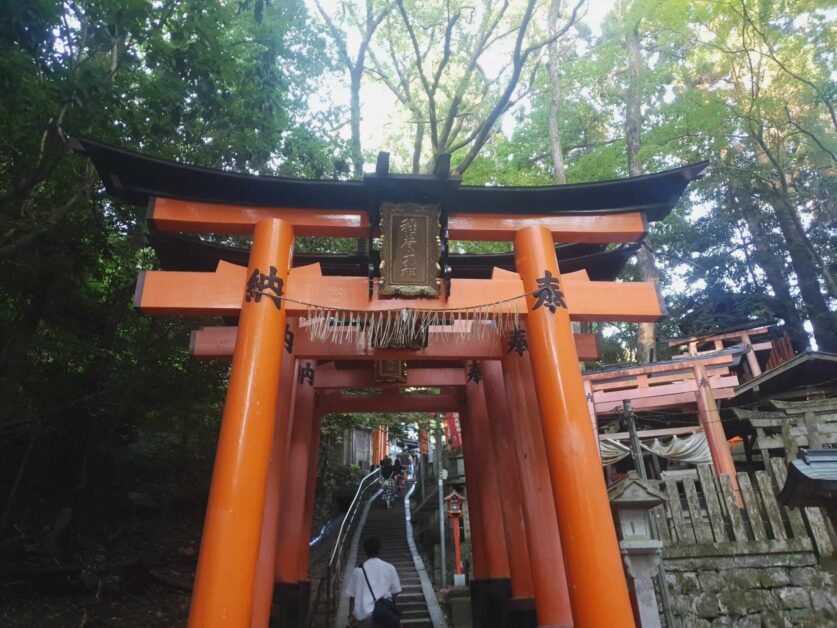
As mentioned above, during my combined three-plus weeks spent in Kyoto, I hiked up to the top of Fushimi Inari three times. As a somewhat avid hiker, I would rate it on the easier side but I would still recommend that you bring appropriate footwear and a bottle of water or two. There are several vending machines strategically placed along the trail as you ascend.
- Hike Length: Roughly 4km (2.5 miles)
- Estimated Time: 1.5 hours to 3 hours (depending on how quickly you hike)
I would say that if you hike at a moderate pace, it should take no more than two hours. I was moving relatively quickly each time I hiked Fushimi Inari as I had reservations (twice) at some yakiniku restaurants that I didn’t want to miss. I also had a hot date with 7 bodacious, frosty Sapporo draft beerus. I didn’t go full “hardo” David Goggins while ascending/descending Inari like I did hiking up Mount Miyajima in Hiroshima, where I “speedran” the descent because I was so afraid of missing the last Hiroshima Carp baseball game of the weekend.
Yes. There are an overwhelming number of tourists when you first show up and it may be somewhat off-putting at first.
However, if you take just 20 minutes to hike a bit further up the mountain, you’ll notice that the crowd thins quickly. There were long stretches of path during my ascent where it felt as if I was the only one on a trail – a stark contrast to when you first arrive at the main shrine. At the top, there were very few other tourists up there (during my sunset hikes) and a considerable amount up there during my one-morning ascent.
During the first half of the ascent up Inari, the close spacing of the torii gates gives visitors the feeling as if they are walking through a never-ending, winding tunnel. As you walk and/or hike further up, the gates become further spaced out and take on far less of a ‘tunnel-esque’ vibe. Don’t worry, the trail is intuitive and it’s hard to miss the bright orange gates.
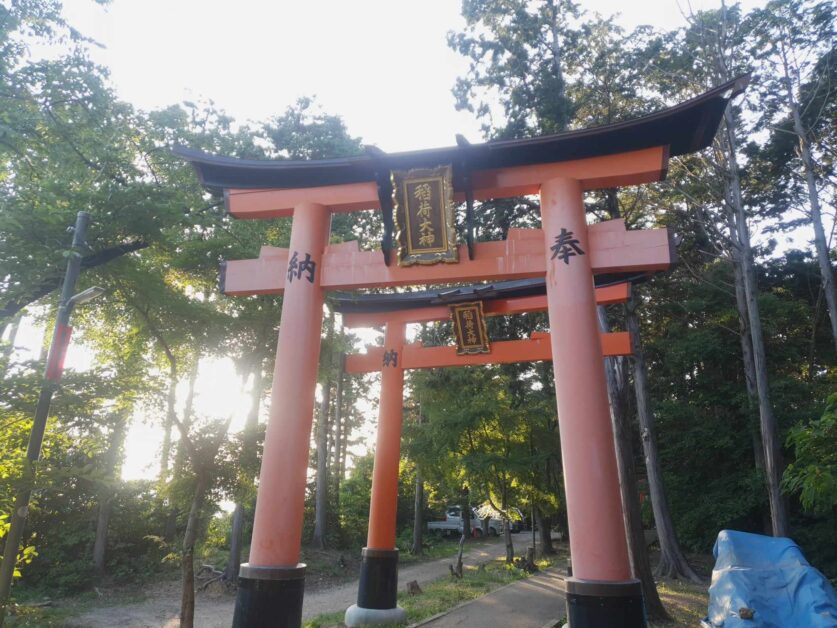
The only point of note that I think is worth mentioning about hiking Fushimi Inari, so you don’t get lost like me, is that when you are halfway up the mountain – you’ll encounter what is the ‘Yotsutsuji intersection’.
At this intersection, you can either bang a Larry (take a left), go straight, or go right (these are the two summits to the peak). Mark this down right now – if you take a left, this will NOT lead up the mountain but it will take you to this beautiful view overlooking Kyoto.

The Yotsutsuji intersection is a popular place and end point for most. Gate density also significantly wanes, so I think a lot of tourists feel as if they “got the picture” by this point as well.
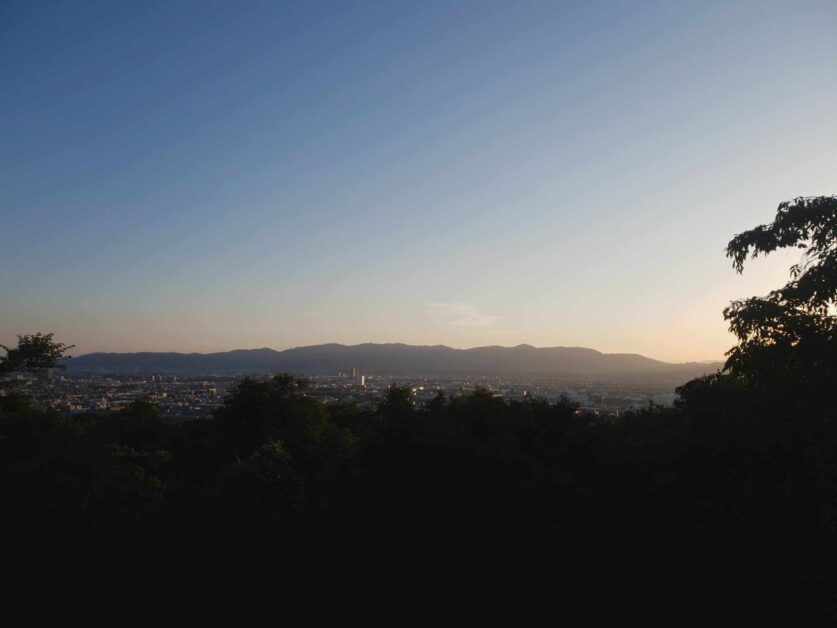
I would typically hang out up here for 20 to 30 minutes and just soak in the remaining Vitamin D of the day. Just make sure that you return to the Yotsutsuji intersection should you want to summit Inari.
My first time hiking Fushimi Inari, I made the mistake of continuing down the path (the path to the left at the Yotsutsuji intersection) and spent a significant amount of time needing to retrace my steps. Upon returning to the intersection, I realized there was plenty of signage laying out how to summit Inari.
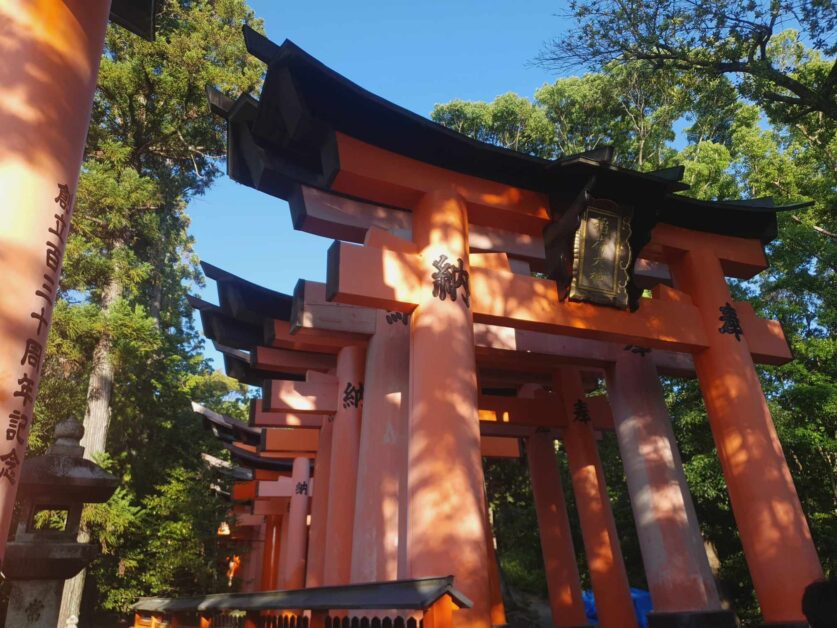
Fushimi Inari boasts two routes to the summit. One is slightly longer than the other but not a significant deterrent (in my humble opinion) to avoid taking it. From memory, I think each route to the summit was no longer than 20 to 25 minutes.

The gates exponentially increase in size as you get further up the mountain and are, of course, far more spread out.
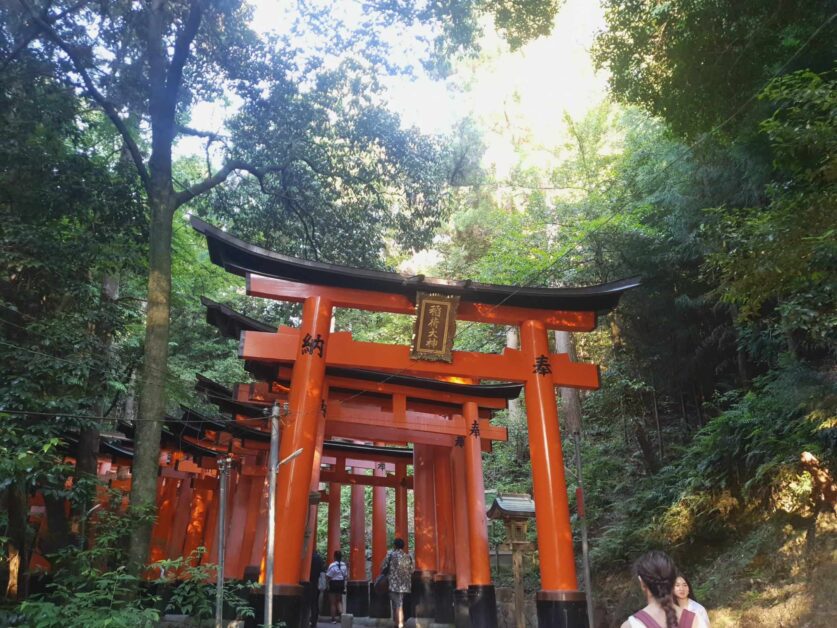
The hiking gradient is relatively low and it will often level out, with plenty of points to peel off and catch your breath or snap a picture (or 37).
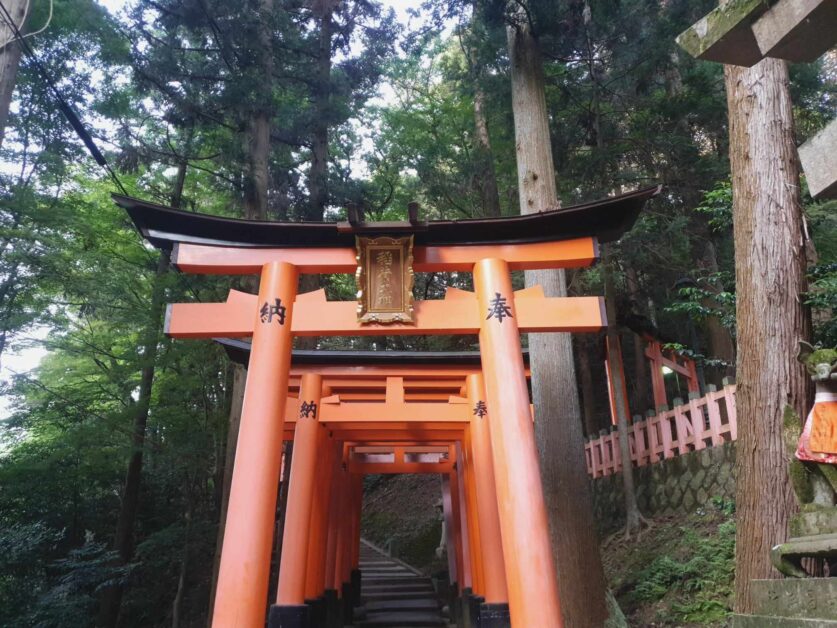
I should warn you that there isn’t actually a view from the top of Fushimi Inari – just a small little shrine and vending machine. It’s a bit anticlimactic but the beauty and views found elsewhere on the trail make it more than worth hiking.
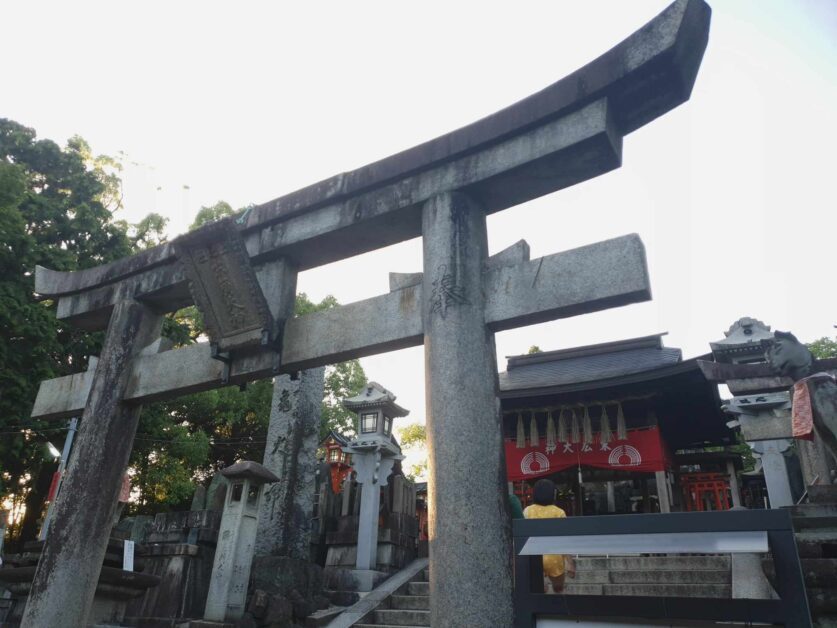
I didn’t really know what to do at the top so I would just walk around and look at the mounds of small little private Shinto shrines.
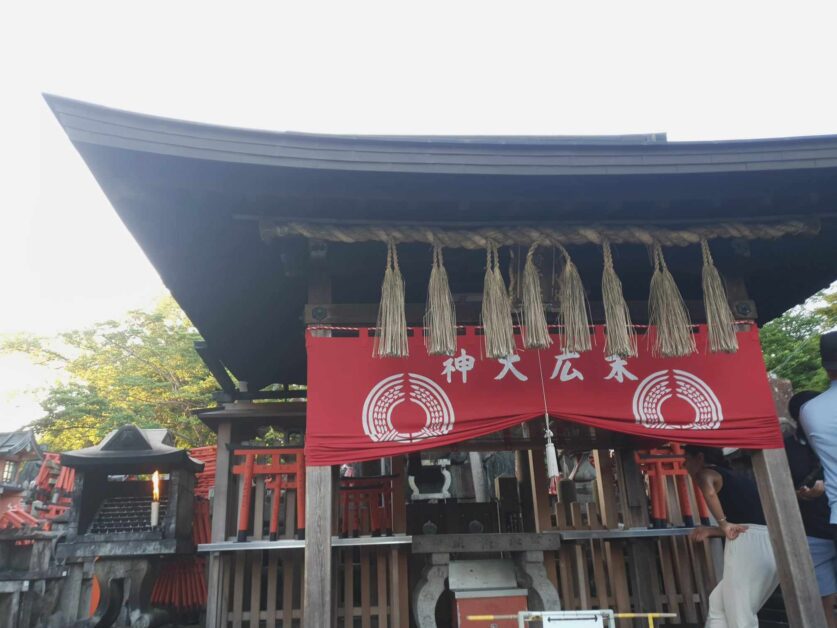
I recommend descending via a different route than you came up. While you’ll inevitably end up at the Yotsutsuji intersection, it’s a nice change of scenery and a way to see what you missed by choosing the path less traveled for your ascent. Tell Robert Frost that while two roads did diverge in a yellow wood, you could actually travel both.

I would be remiss not to mention that there are monkeys and boars that you may encounter along the trail. I imagine that because I was primarily in Japan during Golden Week and heavy travel months the large groups of tourists throughout the day may have scared them off, as I didn’t encounter any.
I do have a small tip for all you prospective Darwin Award nominees out there – don’t feed the monkeys or try to get up close and personal with a boar. We have wild boars in Hong Kong and they are always good for at least several hospital-admitting injuries per year.
Pale Ale Travel Tip: If you are in the ‘Eternal City’ (Kyoto) and looking for a hearty bowl of ramen, make sure to check out my post breaking down three of my favorite ramen restaurants in Kyoto – including Taiho Ramen, my number one ramen in all of Japan and must-try spot for late-night boozehounds and noodle enthusiasts.
Fushimi Inari: One of the Best Days of My Life
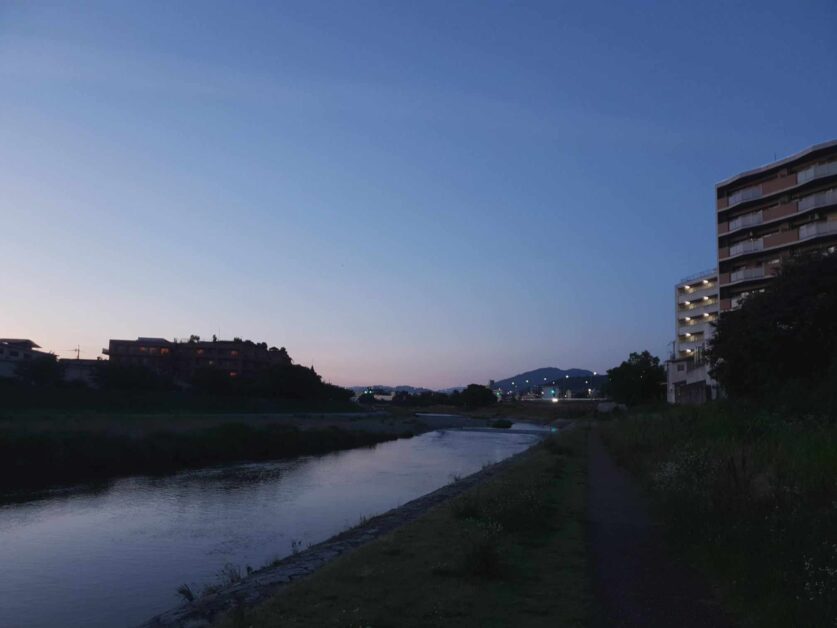
My last time hiking Fushimi Inari, which happened to be in my final weeks in Japan, was kind of like that Bright Eyes song, “First Day of My Life,” except the first face that I saw was that of a serene, kaleidoscopic sunset over Kyoto and the Kamogawa River. I finished my final Fushimi Inari trek with a 5km run along the Kamo (pictured above) back to my hotel which was a highlight of my trip.
Fushimi Inari is somewhere that when I return to Kyoto in the future, you can find me – with or without company. Granted, I wouldn’t choose to go during the middle of the day when I imagine it is even more hectic and crowded. I’d follow my own advice in this piece and ensure I get a restful night’s sleep and wake up at the crack of dawn or wait for the sun to begin its bedtime routine and hike it to capture another sunset in this dwindling mental bottle of memories.
Because it is totally worth it.
If you’ve hiked Fushimi Inari/visited Fushimi Inari, I’d love to hear your thoughts in the comments or via email (info@palealetravel.com). Did you find it to be overly touristy? Did you make it to the top? Did you snag some beef skewers or snacks at the bottom? Would you recommend it to others? If not, let me know what you think is a must-try or must-do in Kyoto instead.
Stay well everyone,
Big Body
Big Body is a voracious lov…eater, a cowardly fighter, and a self-proclaimed curry goat BBQ-eating champion (don’t forget the donkey milk) who likes Stoicism, baseball, and writing in the third person. Having worked for himself for the last 7 years, he isn’t particularly successful but he does still drink ice-cold Sapporo draft beers with the best of them and knows his way around a Dai Pai Dong or two. He is based in Hong Kong but you can still find him in Saigon, Osaka, and Vienna for extended periods.
